I’m flying solo for awhile, and it’s a new experience for me. I acknowledge the many women in the world who do so on a daily basis whether from desire, need, circumstance, or the roll of the dice. And by flying solo, I actually mean hiking solo—I still have my partner around for the rest of my life. But Chris is out-of-hiking-commission for a couple months until he gets a new hip. The wear and tear of decades of physical labor is now calling the shots and winning the pain war.
I am an intrepid partnered hiker—I don’t worry about getting lost or about bothersome insects or about getting too tired or hurt. The natural world is my home, so to speak. It feeds my soul. But something happens to me when I need to do it alone. My irrational fear takes over—that something-bad-is-going-to-happen fear that has plagued me for most of my life. It rises up from my belly and takes control of my breathing and heartrate, and it hijacks my mind. The good news is I have been working on ‘overriding’ that very ingrained behavior for more than a decade now—I see it for what it is, take back control of my breathing, and talk back to the fear voice. So…all of that happened before I even got out the door to hike at Saint John’s Arboretum this week.
Chris is a patient hiking partner—he stops and waits when I see something interesting to photograph, he comes back to look at really unusual things, and he points out artistic perspectives that I miss. The kids tease me, wondering how many hours per mile we’re doing when we hike together! At any rate, literally, it didn’t matter when I was by myself. But I missed having Chris with me to share the sights, signs, and sounds of Spring—and I ended up telling myself that I would be sharing those sights and signs with you readers of North Star Nature—like you were with me. The stirring calls of Canadian geese greeted me at the trailhead—the return of the geese and Trumpeter Swans is a sure sign of Spring, a satisfying sound to hear.
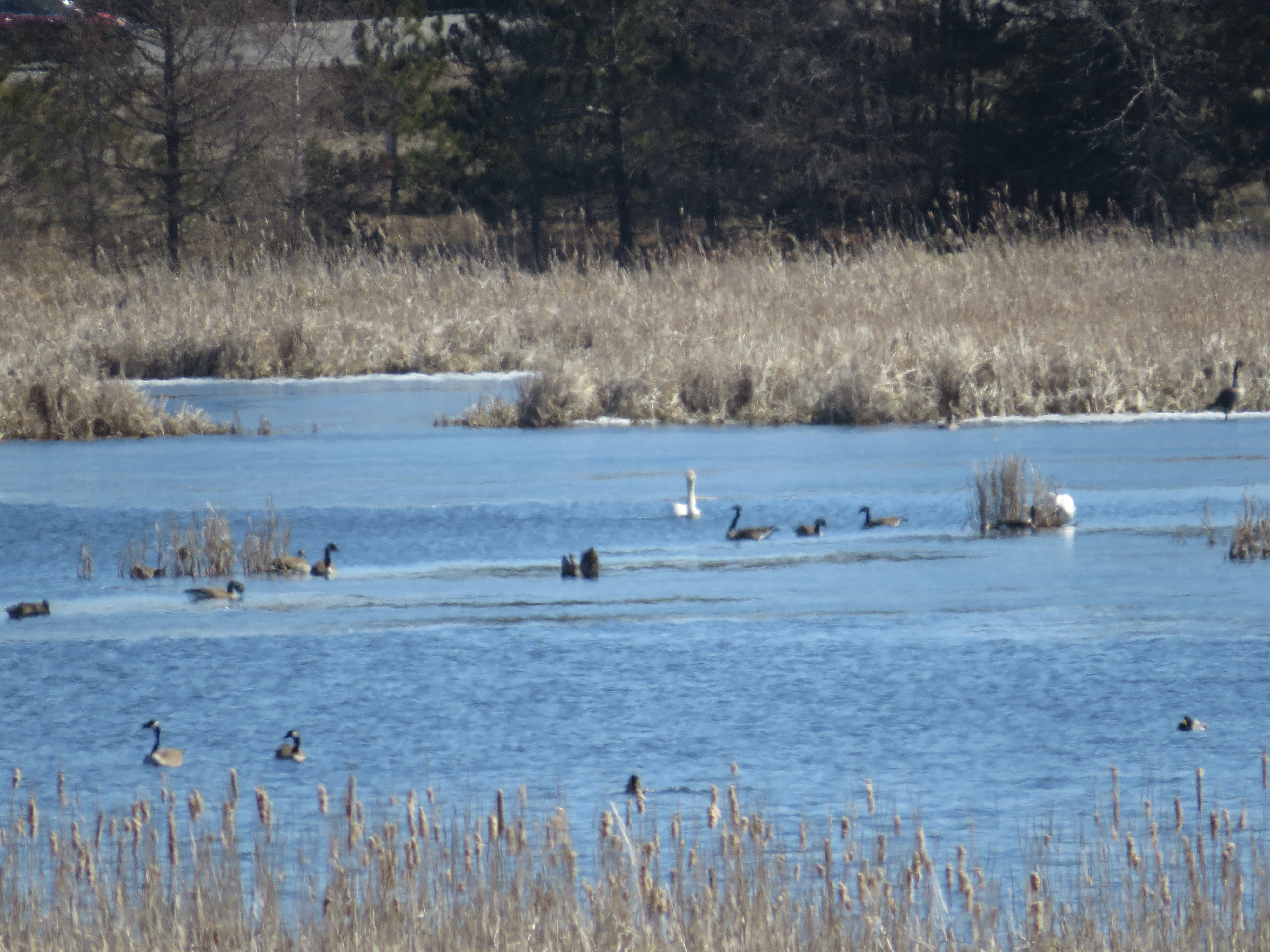
I was thrilled to see the dried remains of last year’s Compass Plants—it takes many years to get these prairie perennials established. Their twelve-foot high stems are matched by tap roots that burrow down to fifteen feet in the ground. It takes a strong foundation for such tall plants!
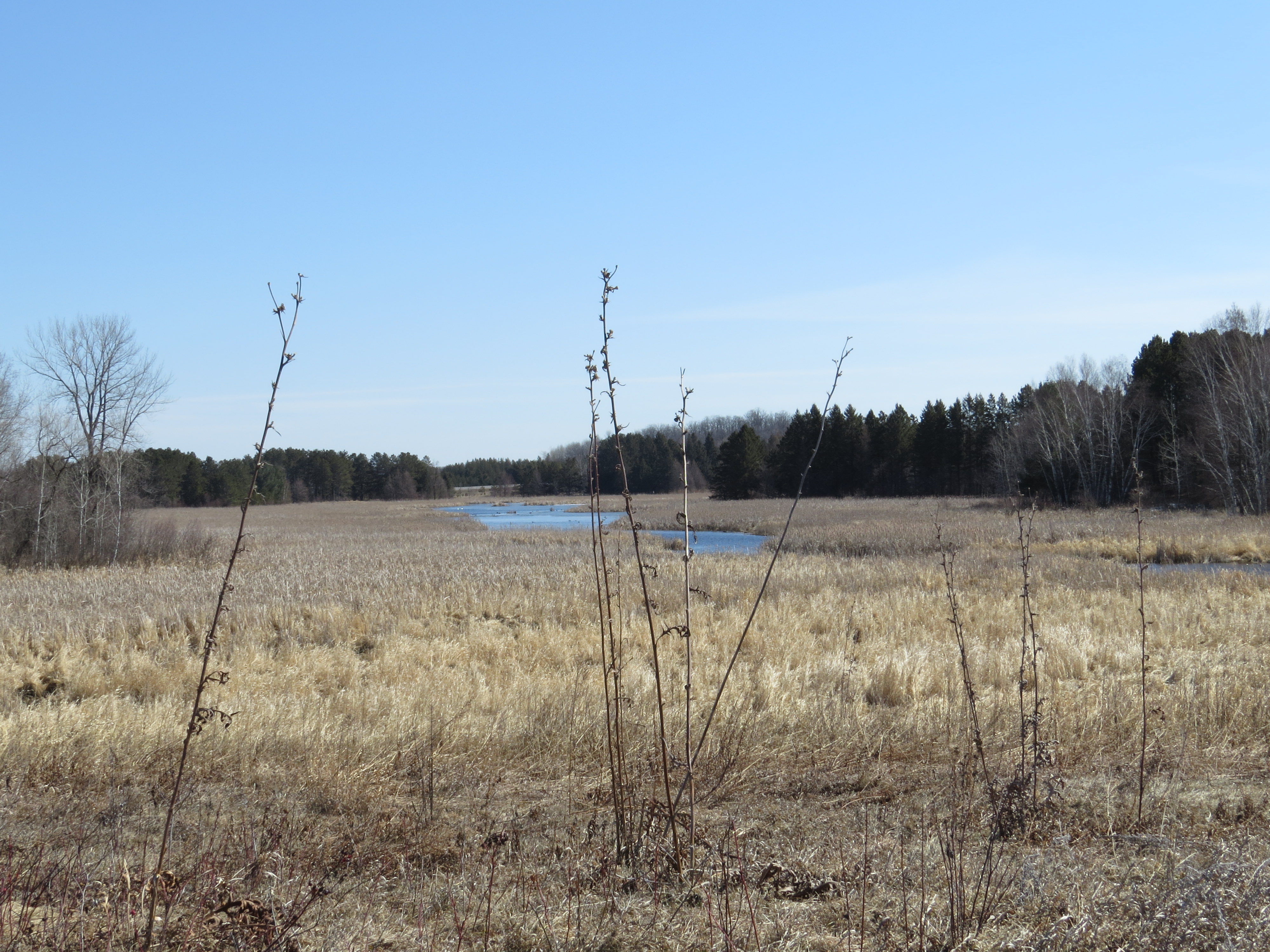
The distinct, deeply cut basal leaves of the Compass Plant are its namesake—during the growing season the leaves stand up vertically and orient themselves with their flat surfaces towards the east and west to avoid the intense heat of the peak sunlight.
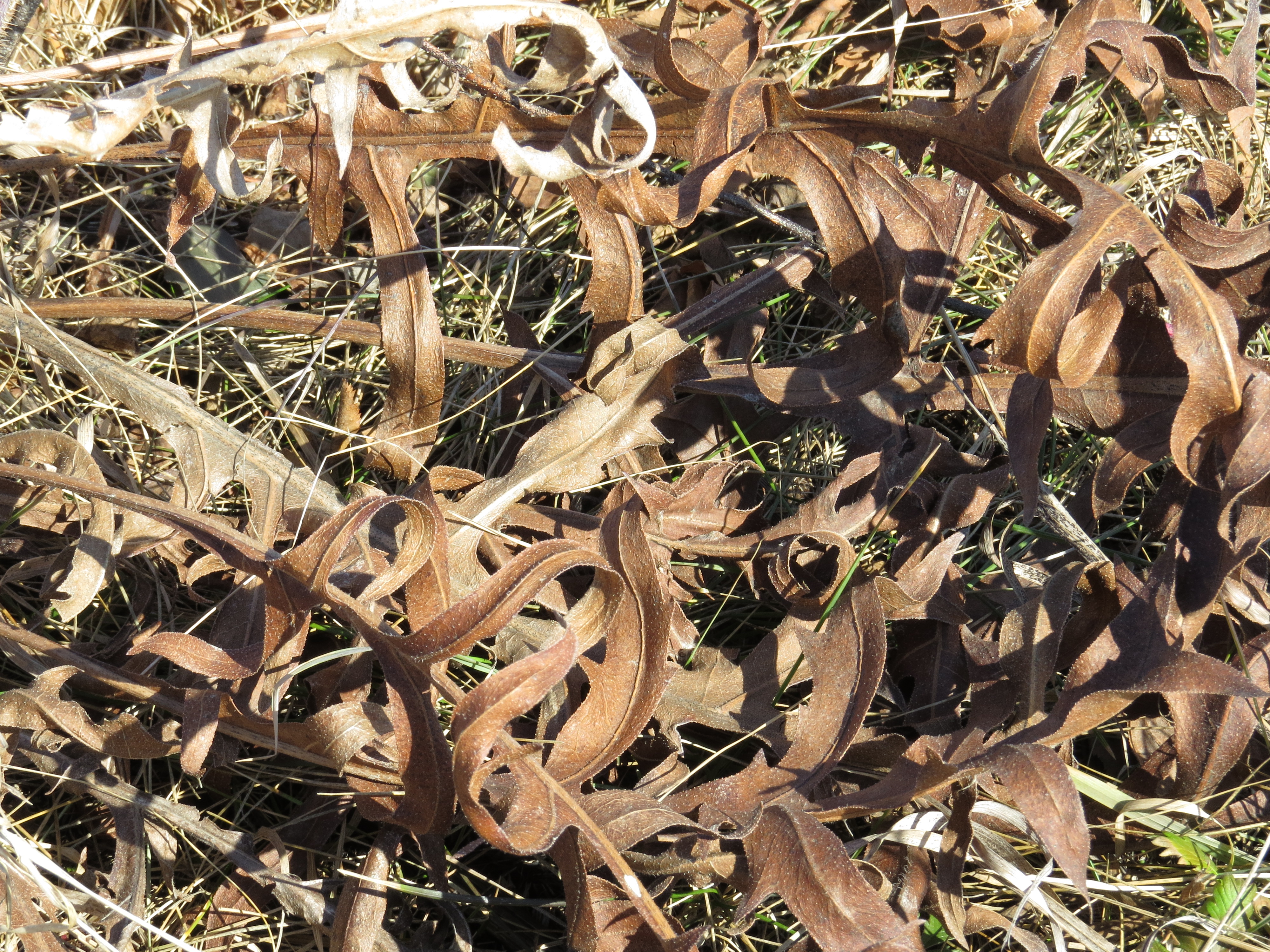
The upper stem of the Compass Plant produces several sunflower-like flowers. The shaving-brush-like seed pod holds the seeds that are favored by many species of birds. In fact, the whole plant is an ecological home to over eighty different species of insects that live on or in the plant!

Old things, Fall and Winter things, still dominate the landscape at this time of year—cattails that have gone to seed, nests that held eggs and young birds, ice-covered lakes, golden Ironwood leaves, and snow-covered trails in shady places.
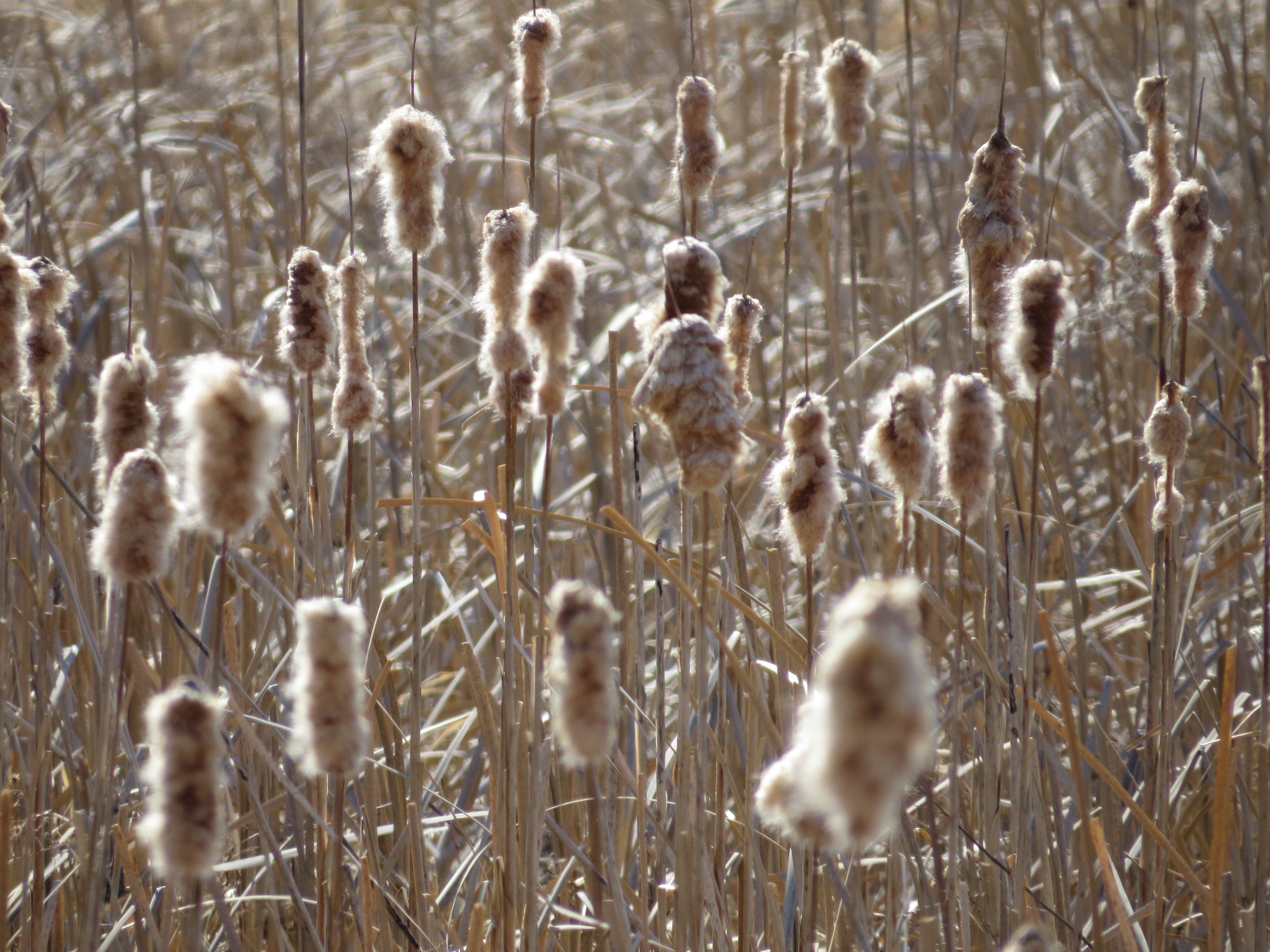
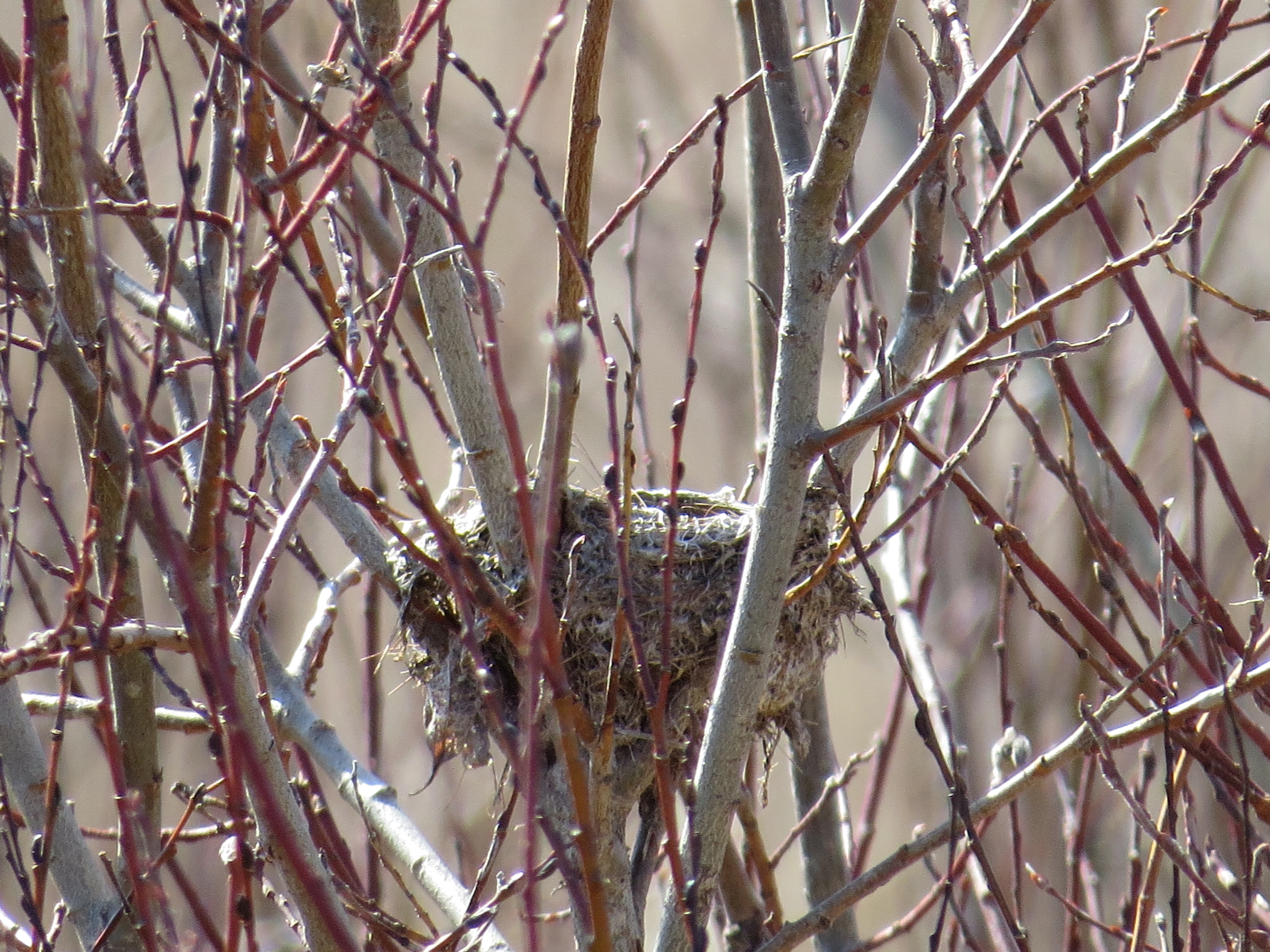
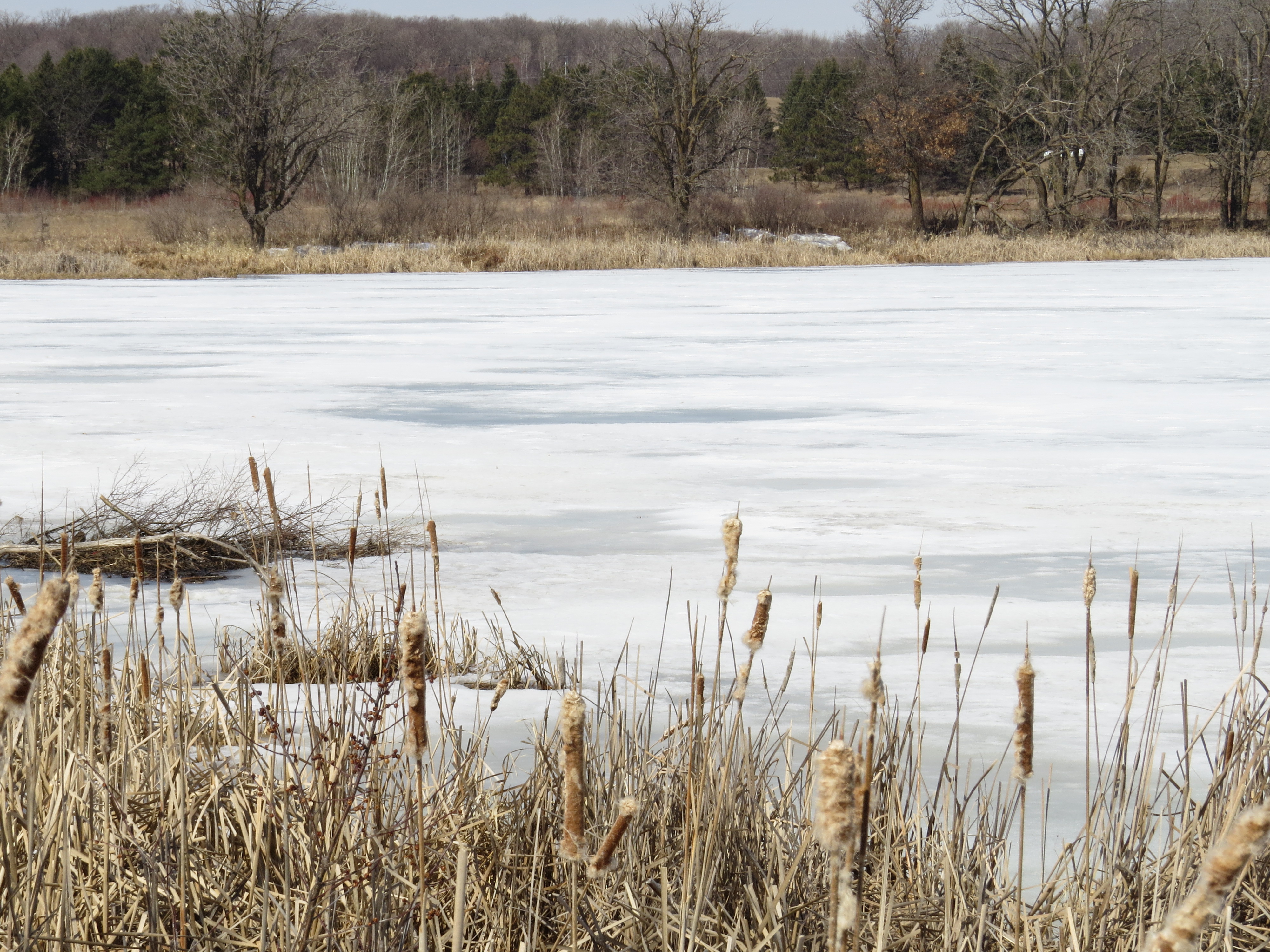
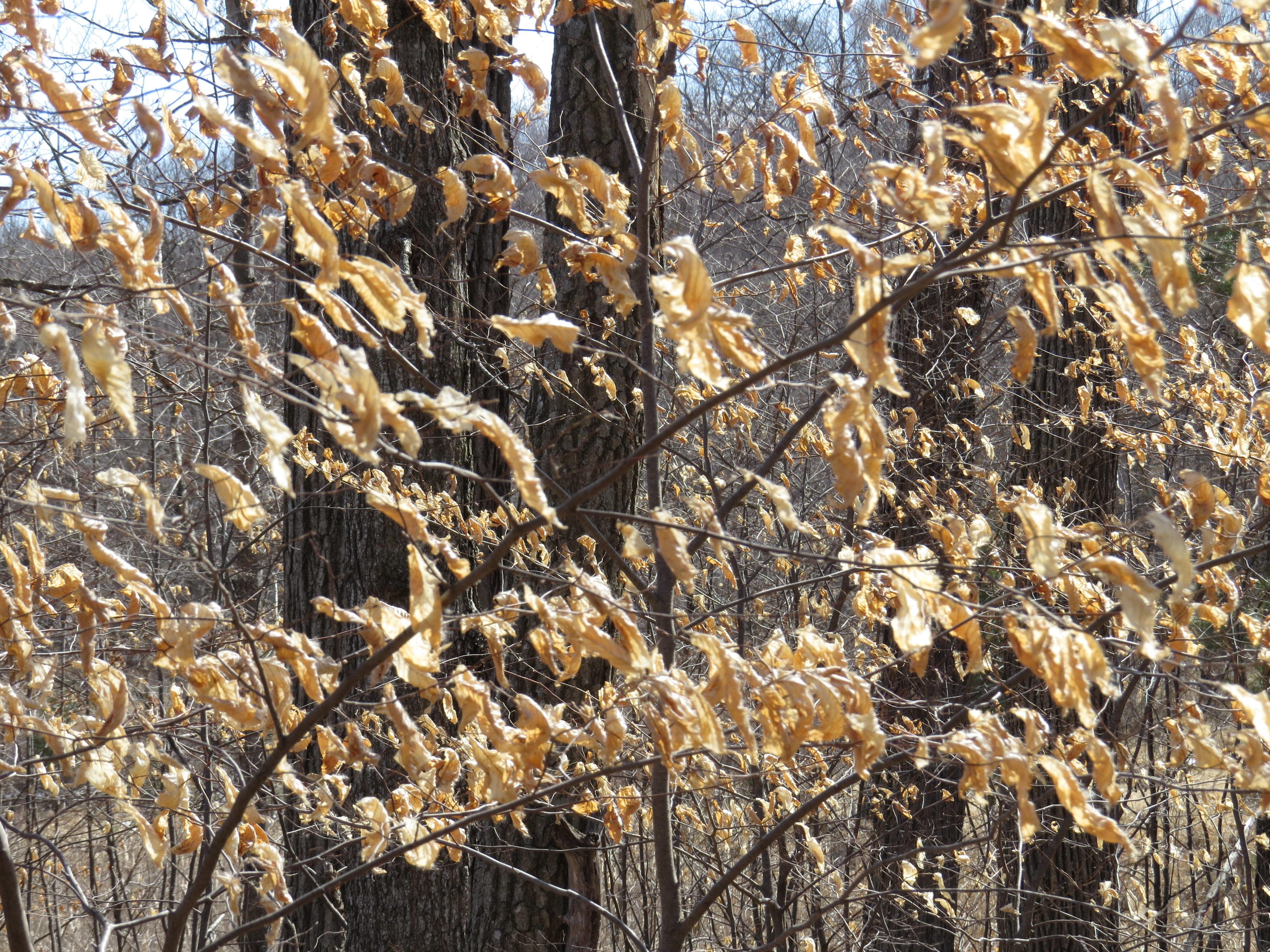
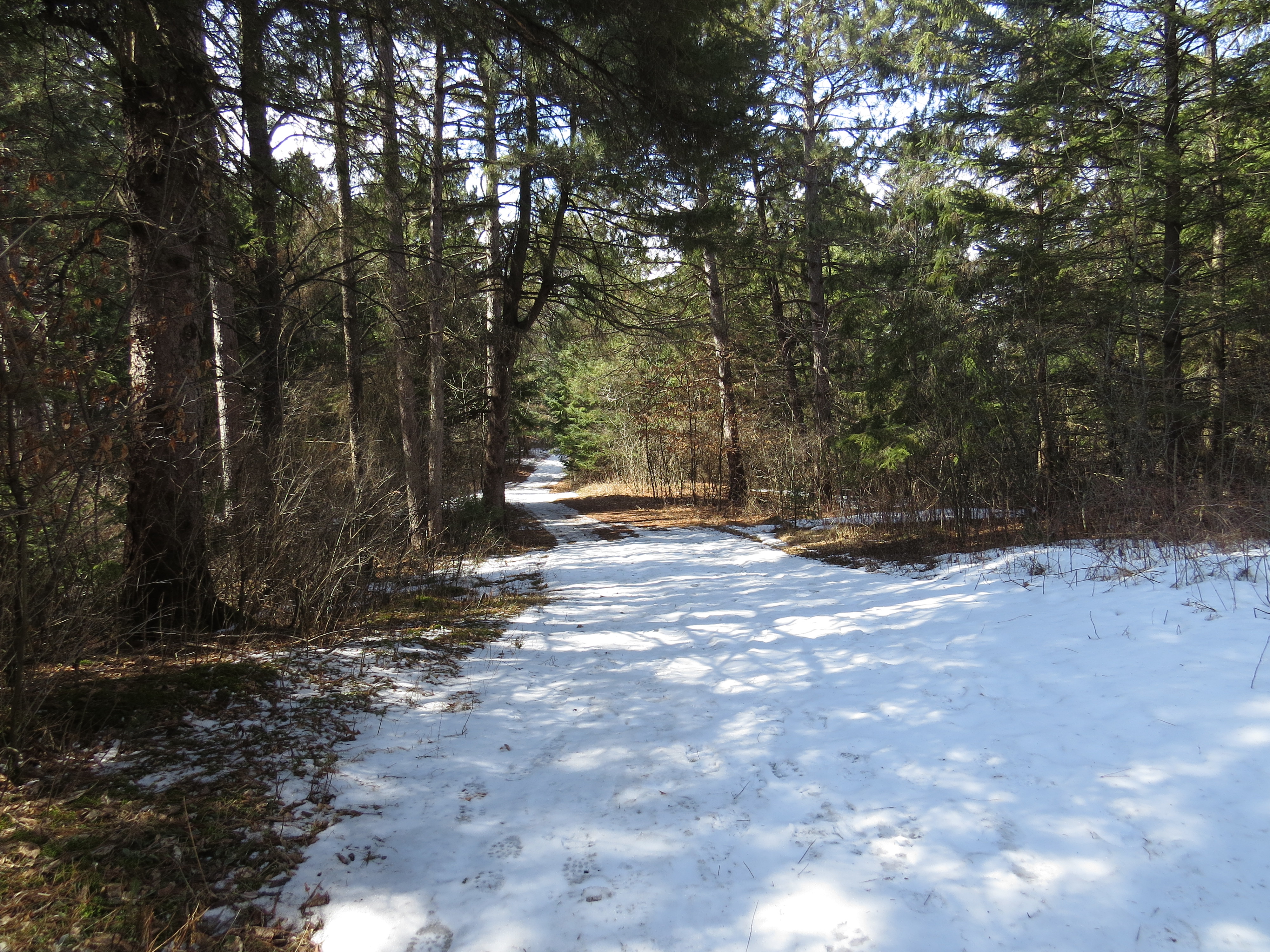
But the melting snow reveals some encouraging signs that are truly only impressive when compared to the last four months of frozen landscape. Each small sign of green and growing reminds us of what is to come and whets our desire for the new season.
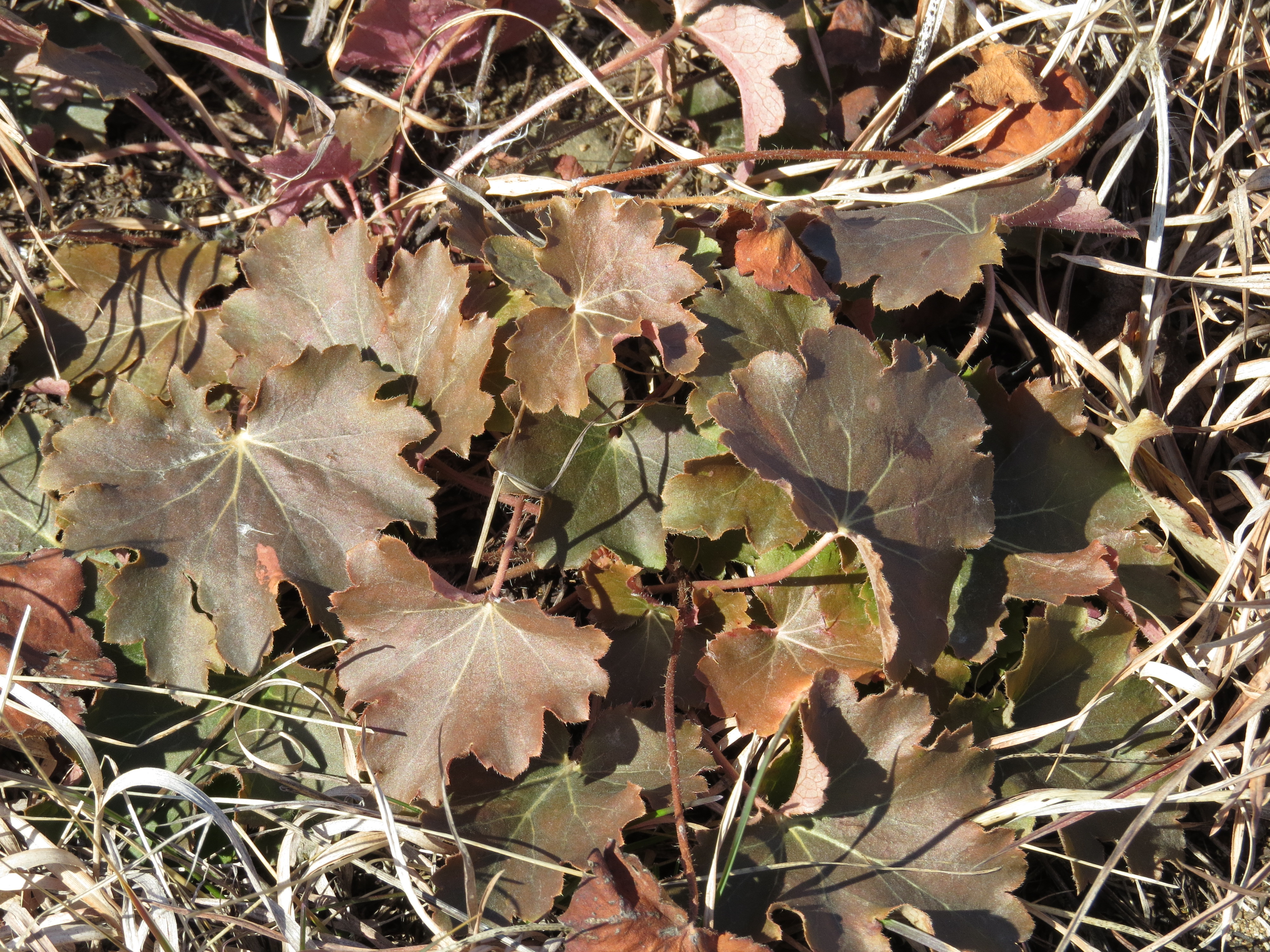
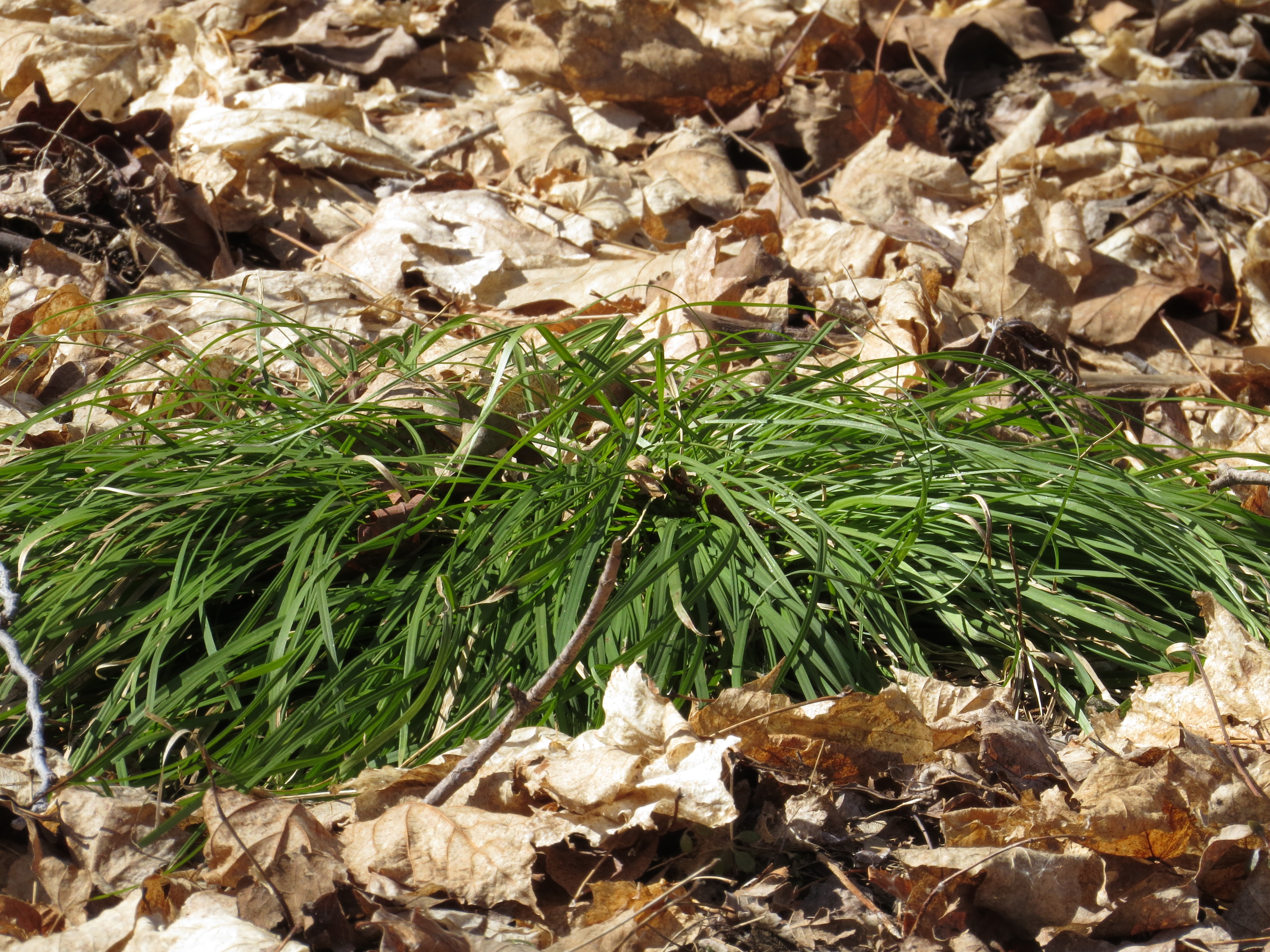
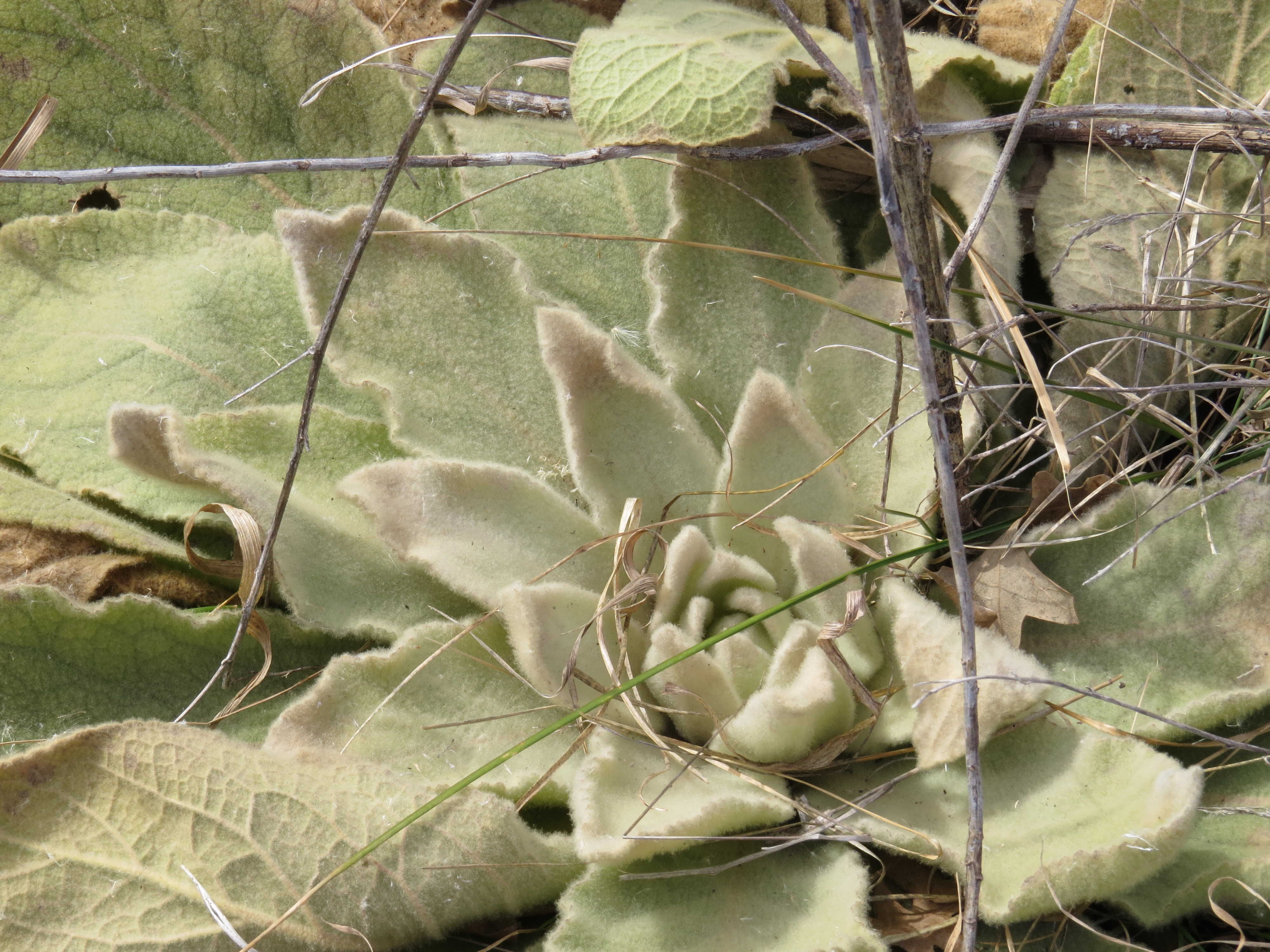
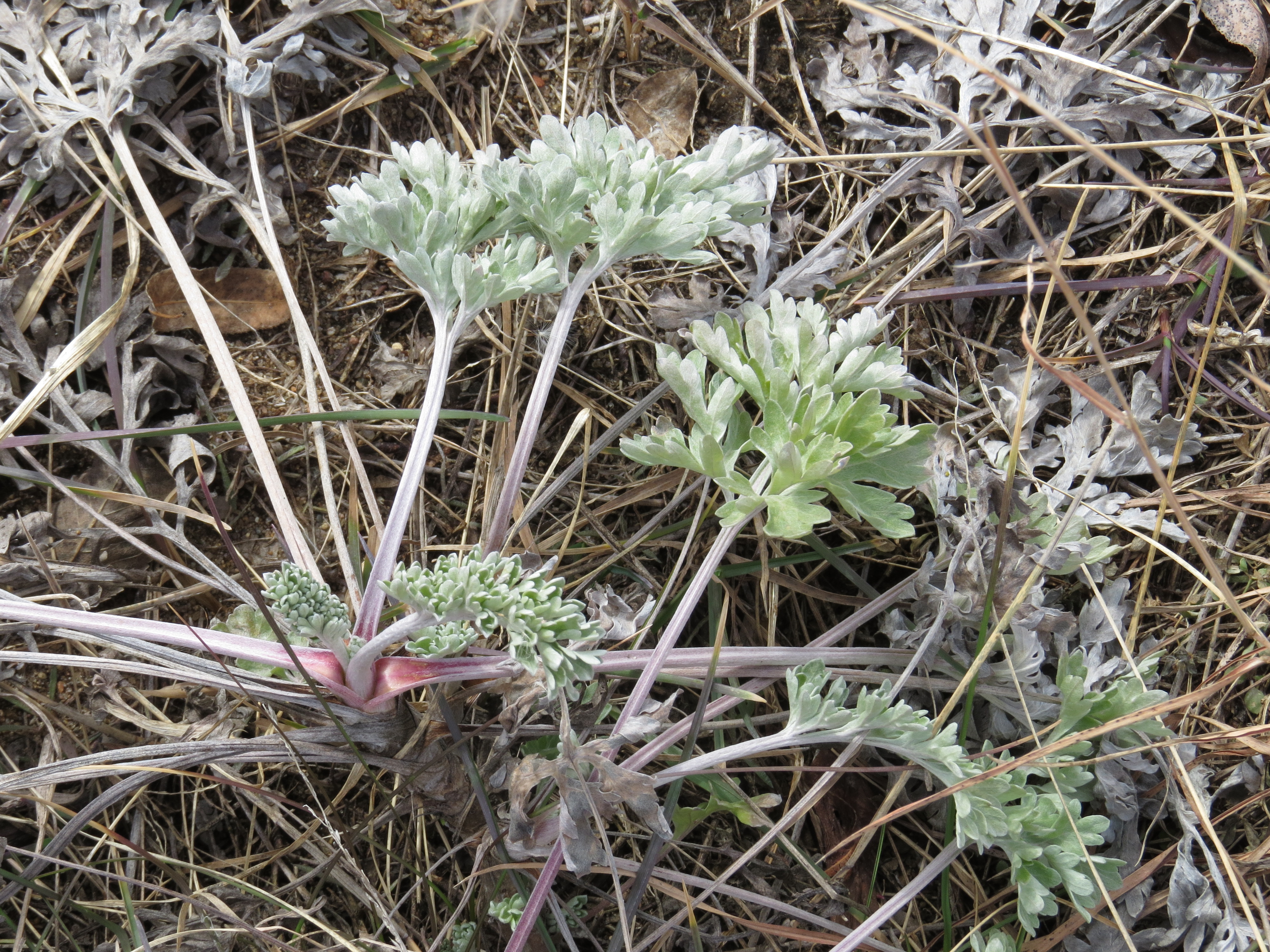
The melting snow also reveals some unusual finds. Bones are an important food and nutrient source for animals during Winter. All the flesh and most of the cartilage had been chewed off this bone, along with the marrow that could be reached from each of the ends.
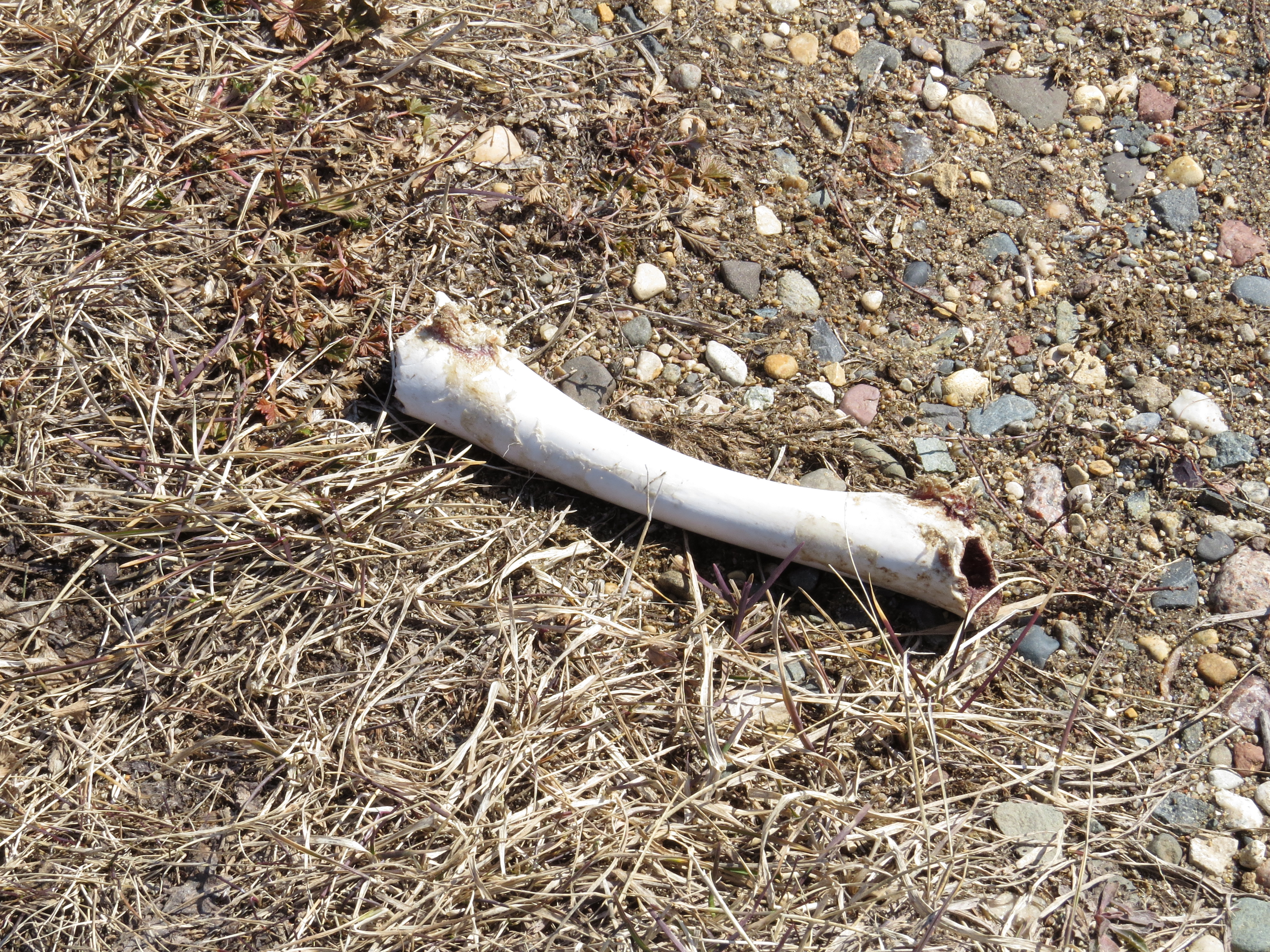
One of the trunks of a double Maple tree was inexplicably broken about fifteen to twenty feet above the ground. My guess is a sap ‘explosion’ occurred on a freezing night during these warm days/cold nights that are imperative for the flow of sap (and thus for the collection of sap for maple syrup.)
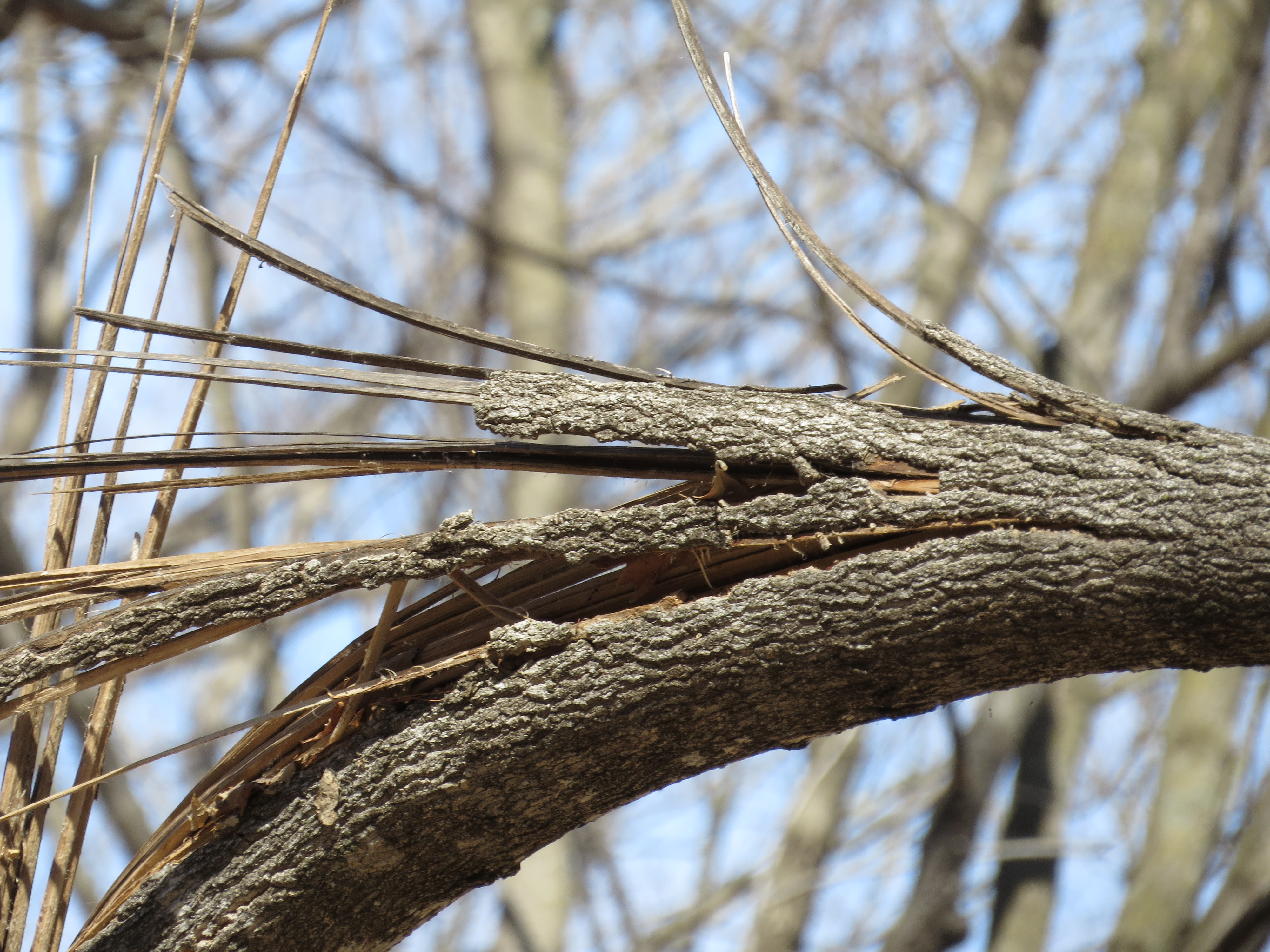
A Crow lost a handful of feathers in some kind of recent scuffle—the feather was too pristine to have made it through a snow-covered Winter.
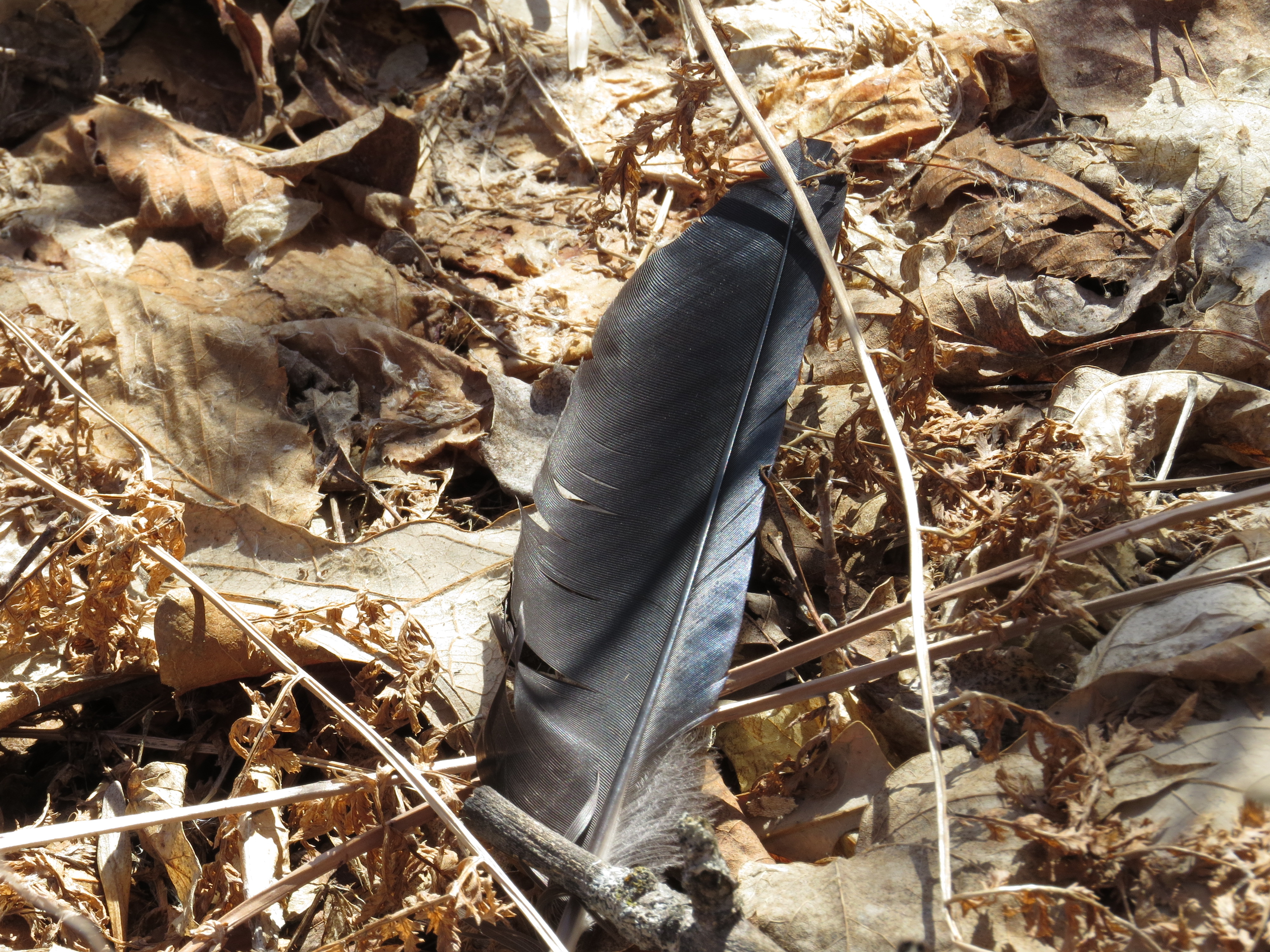
Bright yellow-orange is a hike-stopping color at this time of year! Perhaps this is Yellow Brain Fungus—it’s growing on decaying wood with plenty of moisture from the melting snow.
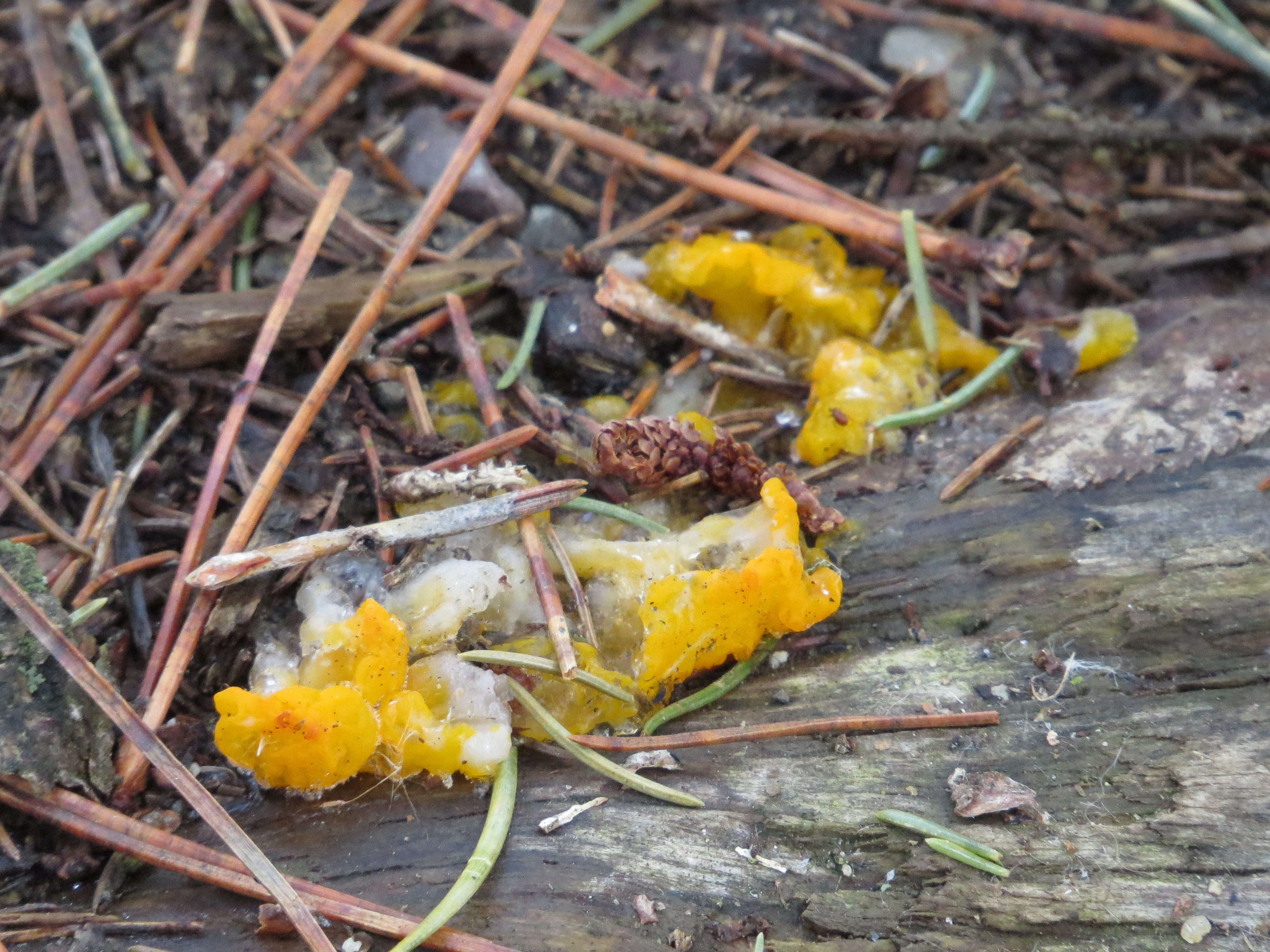
Thanks to my friend Gail who sent a post about snow fleas, I noticed these little jumping critters! Snow fleas aren’t really fleas but are able to jump several inches like fleas. They are actually tiny arthropods called springtails. (And they don’t bite.)

As a Winter color-deprived observer, I liked the colors of these rocks on the trail! Celebrating the simple pleasures of the season!
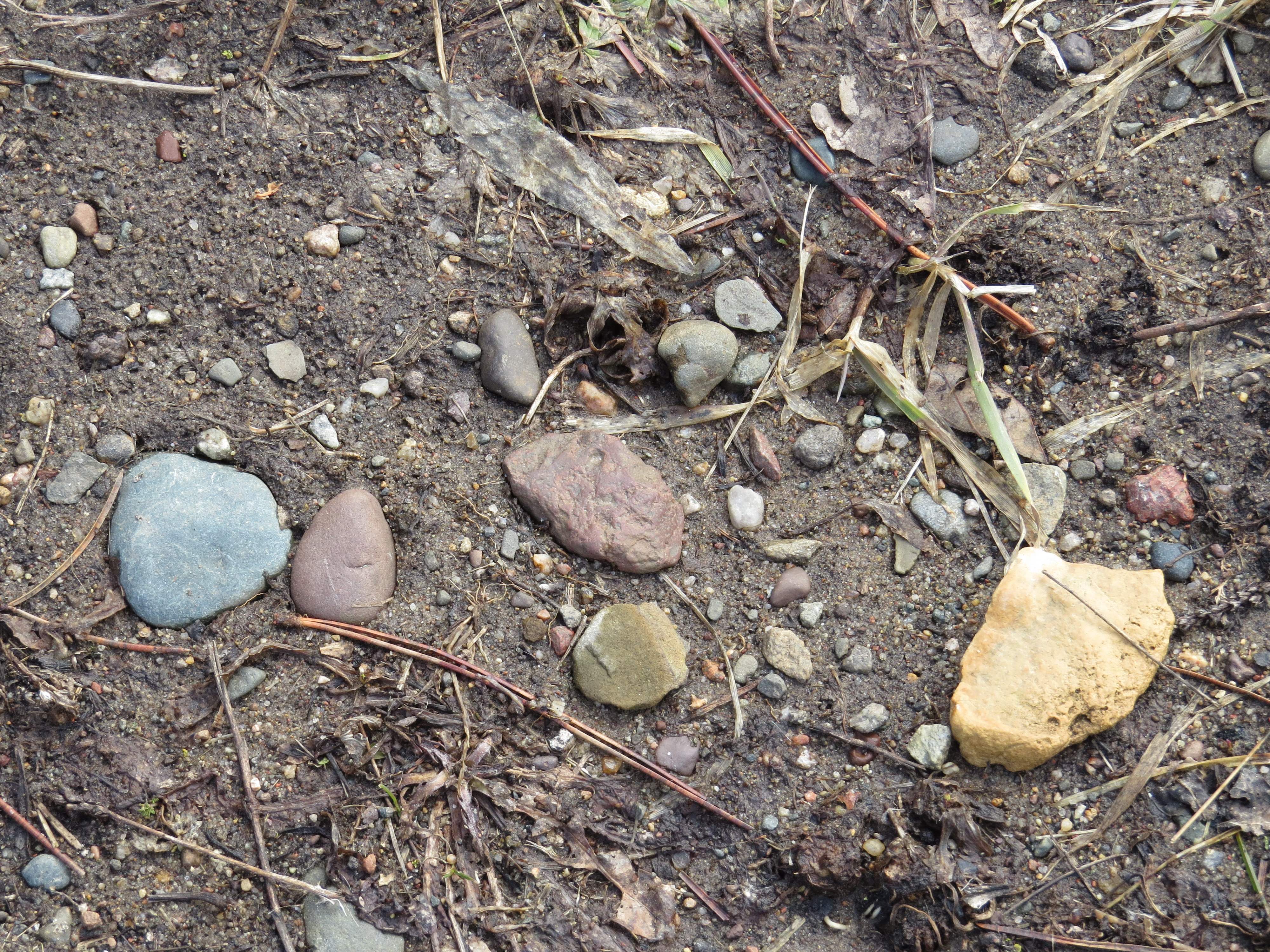
On this first day of April as I wandered alone through the prairie, wetlands, and forest of Saint John’s Arboretum, the seasonal change was palpable. The ice was melting, water was flowing in spots, waterfowl were pairing up, sap was flowing, and green things were growing. No fooling, Spring is here.
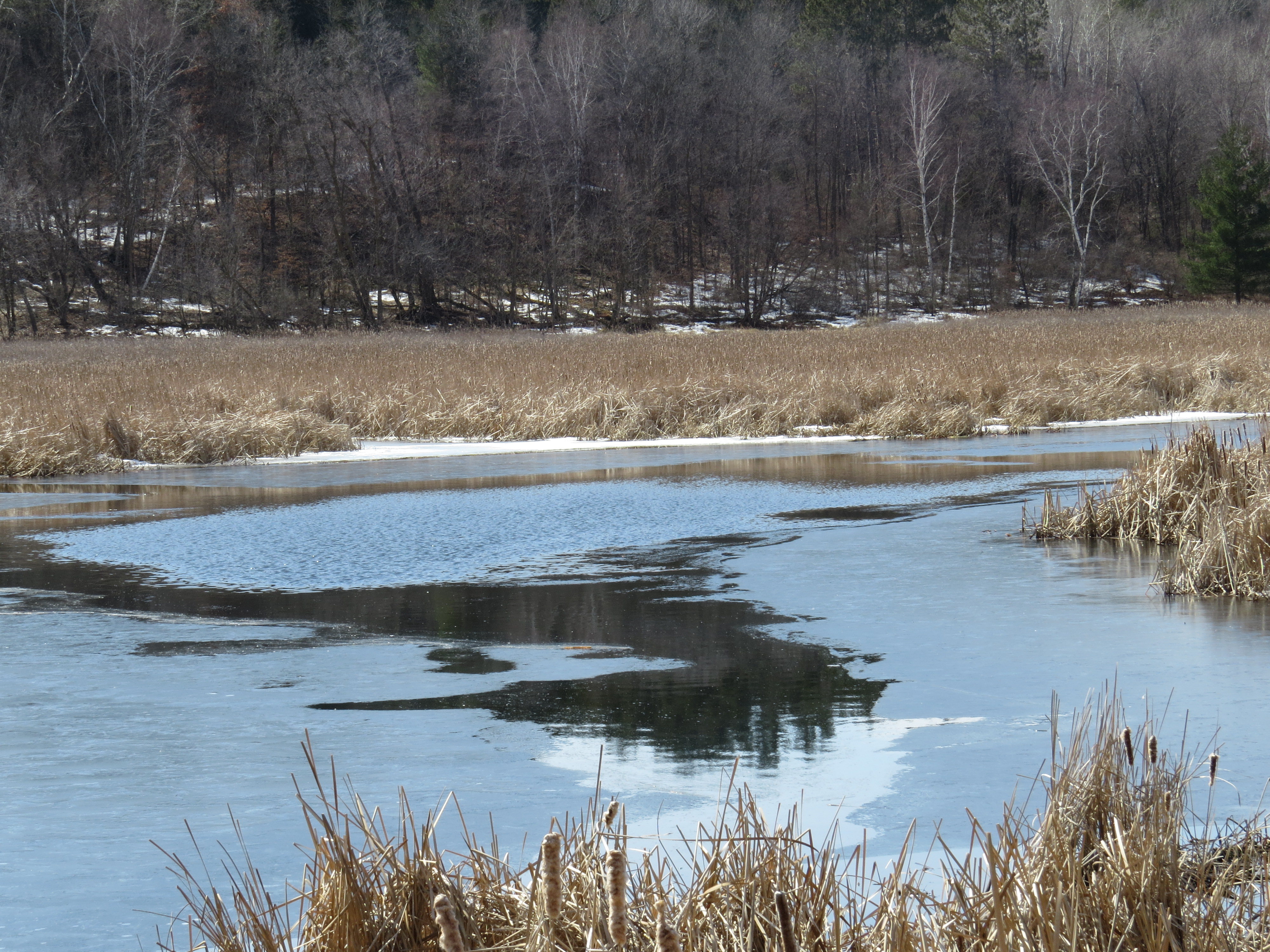
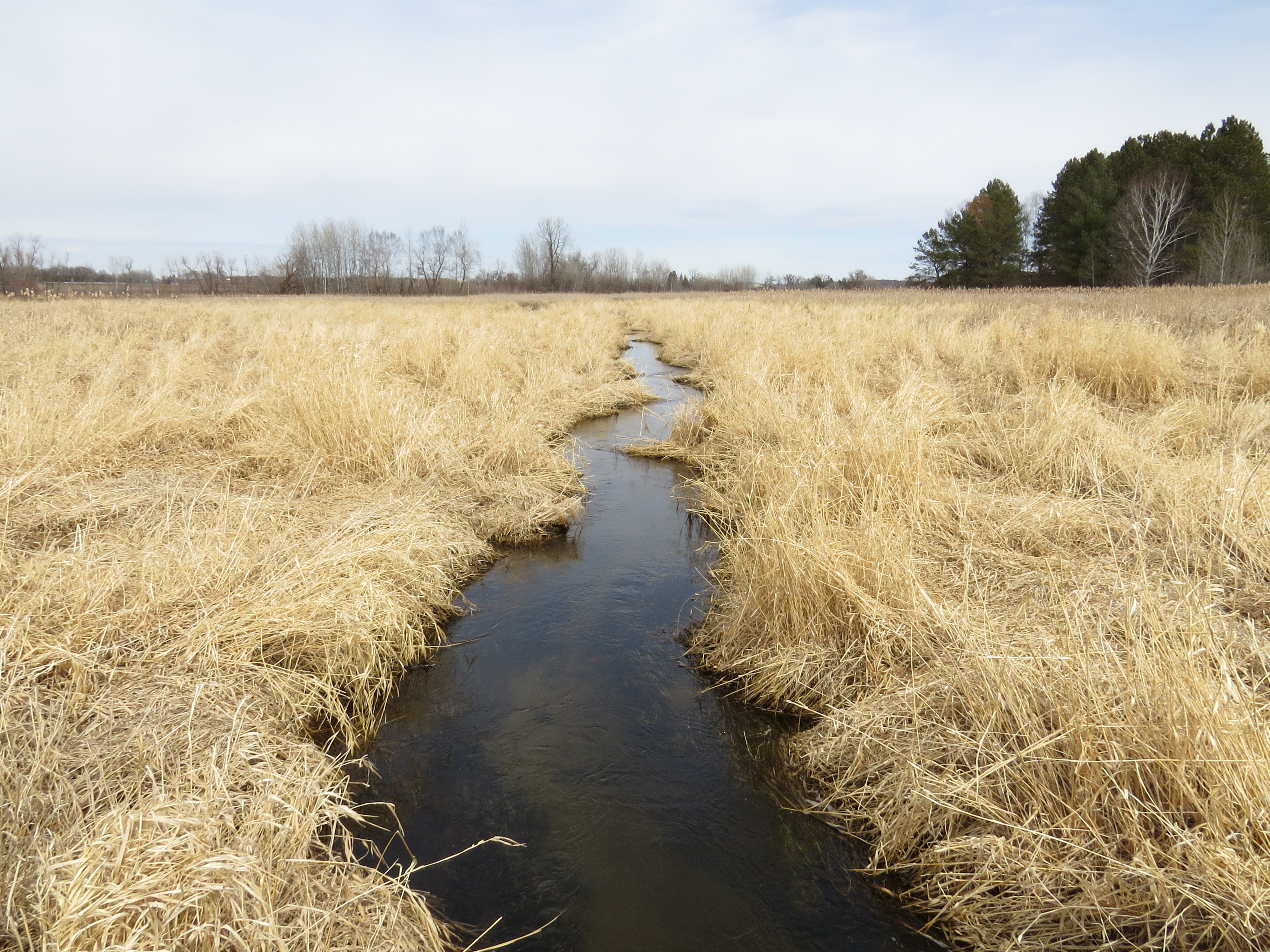
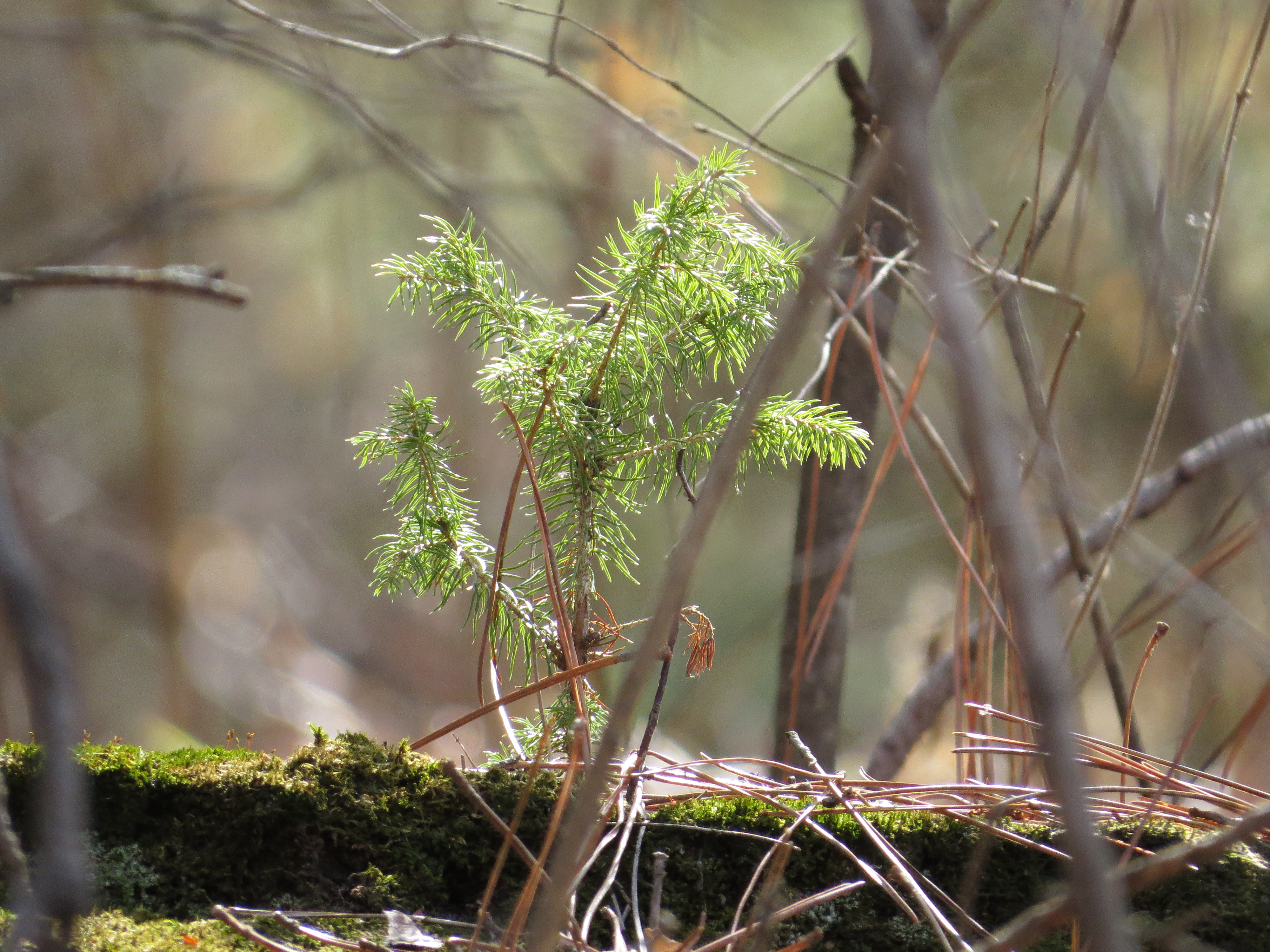
Growth—whether greening of the flora, developing of the fauna, or the expansion of our inner knowledge, resources, and strength—has its seasons. Sometimes we willingly and proactively choose to expand our comfort zone, and other times Life’s circumstances do the choosing for us. Flying solo is a choice many make intentionally, and just as often, that ‘choice’ befalls people who had no desire, will, or capacity to go it alone. But death happens, divorce and separation happen, war unfortunately happens, and all sorts of other disruptions. As unfamiliar as it is for me to hike alone without my partner of forty years, it is a small thing compared to what many other people are going through. And yet, it stretches me. It forces me to confront my irrational fears while at the same time acknowledging that solo hiking for a woman has its very relevant dangers (as does walking alone in many urban settings.) It’s at times like these that it’s helpful to burrow down deep into the foundation of our Selves—the taproot of our being—to find the strengths and skills we possess that show us the way. Old things always fade away to new green and growing things—we are no exception. I am celebrating and sharing with you the simple, colorful pleasures of the new season.